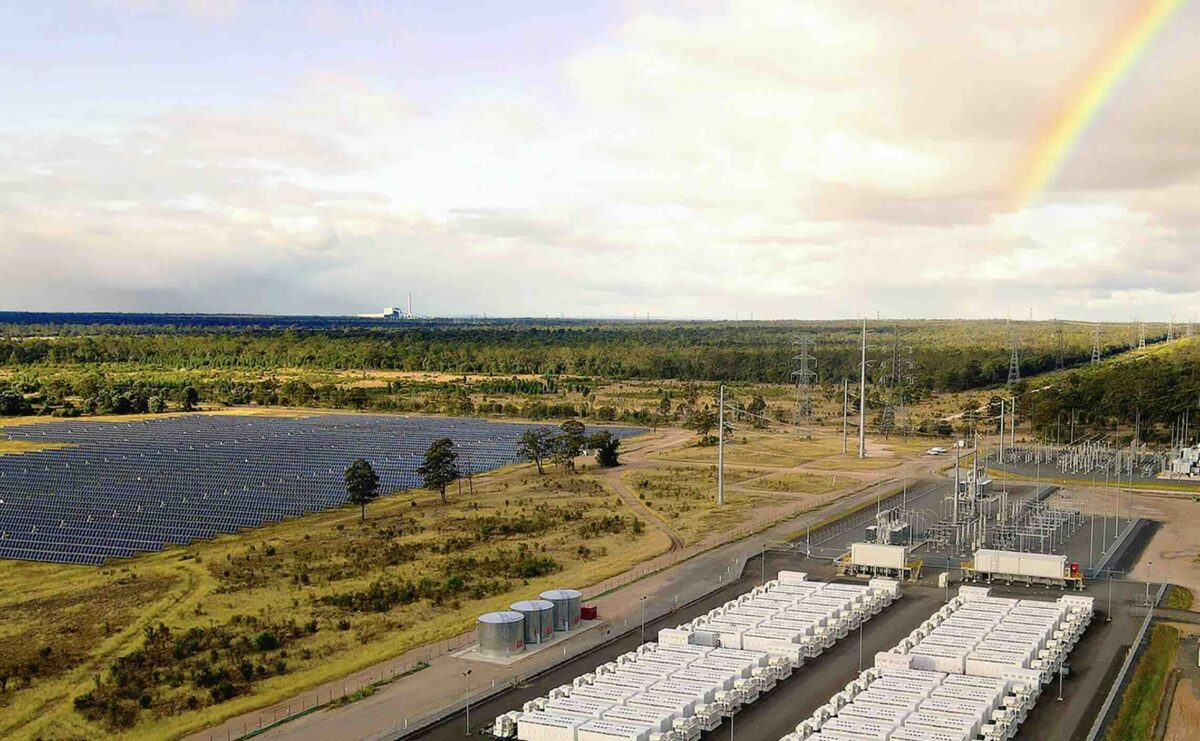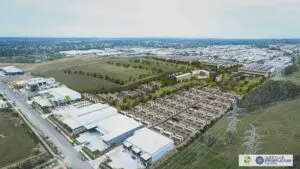Australia’s growing fleet of big batteries are soaking up records amount of rooftop solar output in the middle of the day, as a wave of new storage projects join the grid and start the ramp up to full capacity.
On Thursday, a new record for battery charging was set on Australia’s main grid – a peak of 1,327.5 megawatts (MW) at 11.05am, according to data from GPE NEMLog, easily beating the previous record of 1,067 MW set just after midday on April 2.
At the time of the new peak, rooftop solar was producing more than 10 GW, some of which would have been soaked up by appliances in their host buildings and some of it by the 300,000 or so household batteries that are scattered around the grid.
The main drivers of the new charging peak appear to be some of the country’s newly connected big batteries, including in Queensland, where GPE NEMLog says the charging record was pushed to a new peak of 511 MW earlier in the morning on Thursday.
Queensland’s battery activities have been augmented by the newly connected Greenbank battery, which has been very active, along with the recently connected Western Downs, and the Chinchilla, Wandoan South and Bouldercombe batteries.
A number of new batteries have joined the grid, including the Blyth battery in South Australia, which is now fully commissioned, the Rangebank and Koorangie batteries in Victoria, and the first stage of what will be the country’s biggest battery at Eraring, which is being built at the site of the country’s biggest coal generator.
The Eraring battery will be sized at 700 MW and 2,800 MW, and will help replace the four 720 MW coal units that make up the 2,880 MW Eraring coal fired generator, whose owner Origin Energy recently agreed to a minimum two year extension in an underwriting agreement with the state government.
The first stage of the Eraring battery is sized at 460 MW and 920 MWh, and is currently working through the commissioning process and a series of hold points that limits its capacity. It has been soaking up to 30 MW of capacity as it works through the first of its hold points.
Also active, although at low scale, has been the Waratah Super Battery, which is being built just up the road from Eraring at the site of the now shuttered Munmorah coal generator.
It has a contract to act as a kind of giant “shock absorber for the grid”, allowing transmission lines carrying power into the major load centres to operate at full capacity. Once complete it will be – for a time – the biggest battery on in Australia at 850 MW, 1680 MWh, and the biggest single unit on the grid.
In recent times, its outputs and inputs have been relatively low, although late last year it was ordered to be on standby as the market operator prepared for potential heatwave supply shortfalls that did not eventuate.
Meanwhile, on the other side of the country, on the separate Western Australia grid, big batteries are also making their mark, with the first three – Kwinana 1, Kwinana 2, and the first stage of Neoen’s Collie battery – soaking up around 500 MW of rooftop solar at various times this week.
Those batteries – and several others yet to be built – have specific contracts to soak up solar in the middle of the day and inject it back into the grid in the evening. The W.A. grid is more heavily dependent on such contracts because it has no links with other states to import or export when needed.
Neoen’s Collie battery will overtake the Waratah battery as the biggest in the grid – with a total capacity of 560 MW and 2240 MWh – when it is complete, but will by quickly overtaken by Eraring later that year, at least in terms of storage.
See Renew Economy’s Big Battery Storage Map of Australia for more details.








